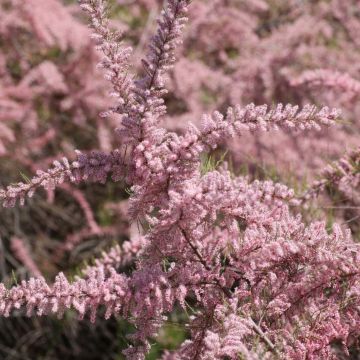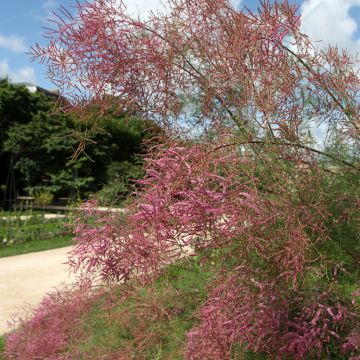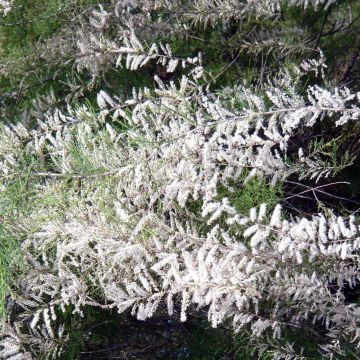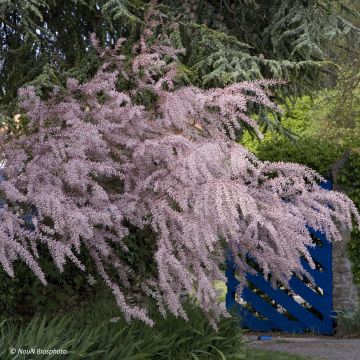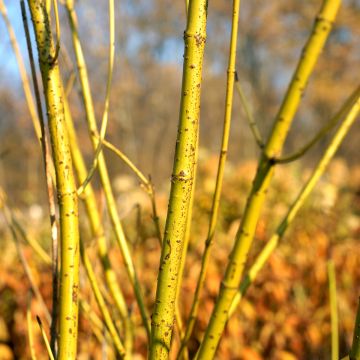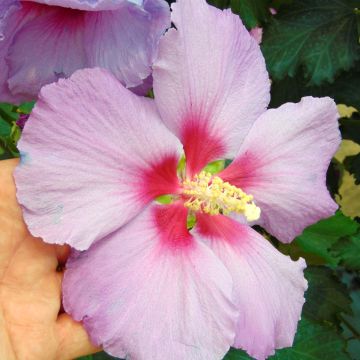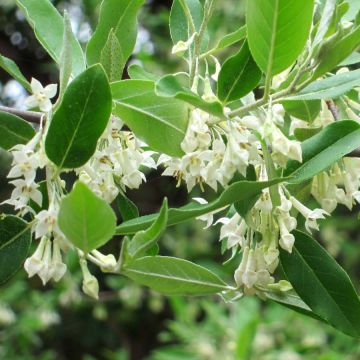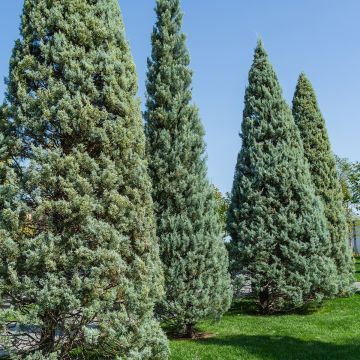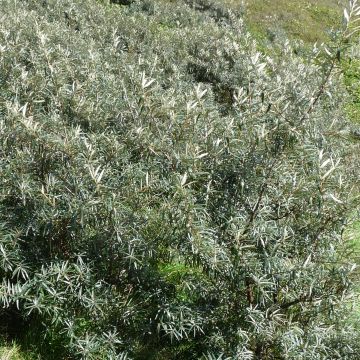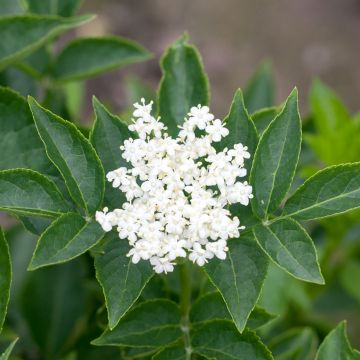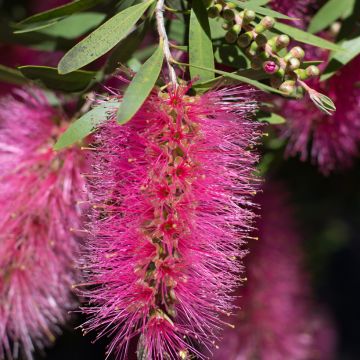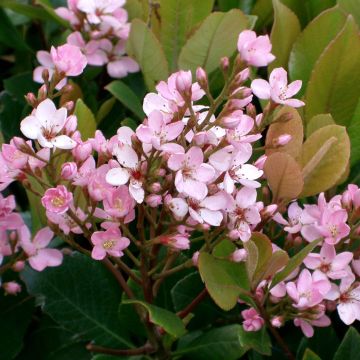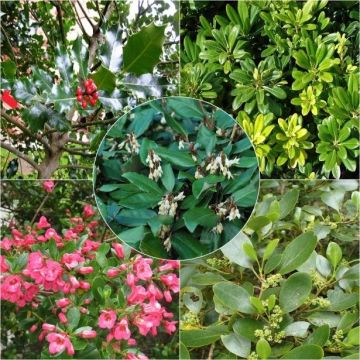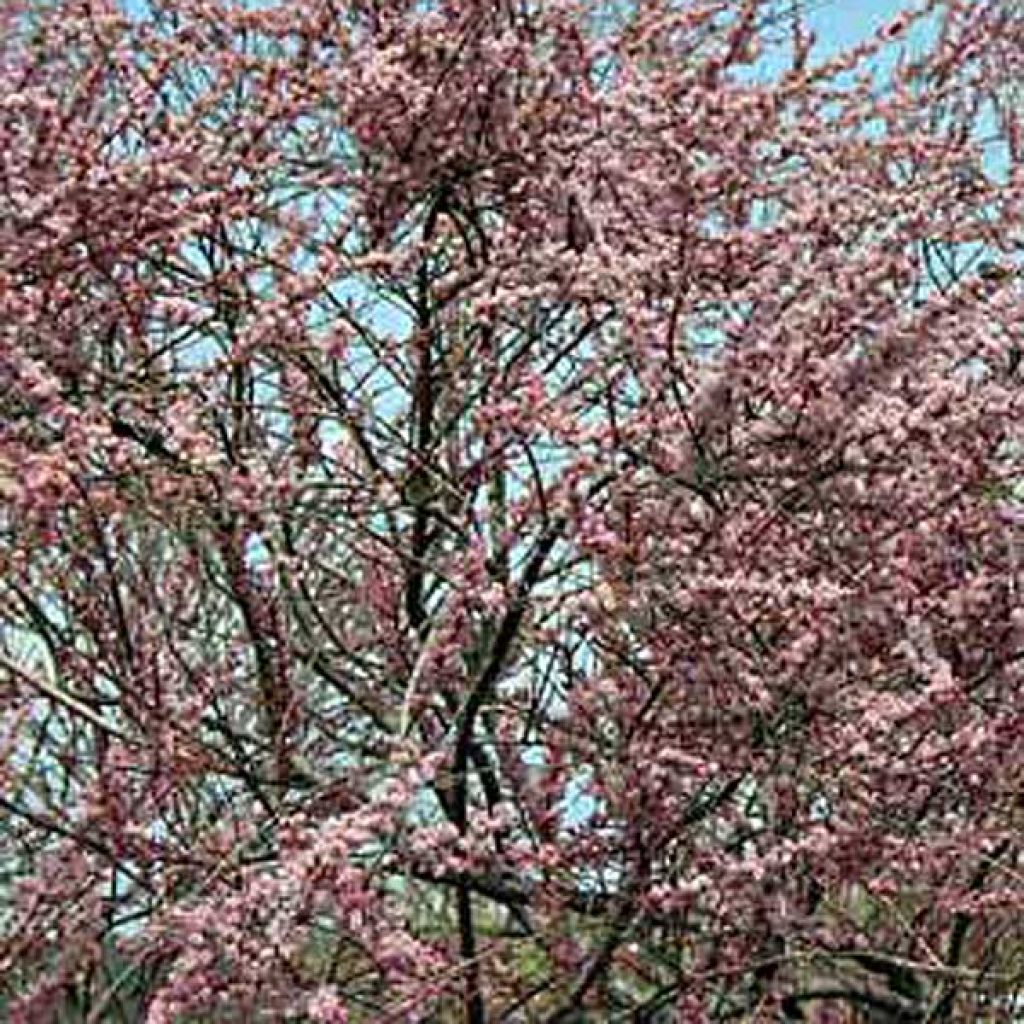

Tamarix ramosissima Pink Cascade
Tamarix ramosissima Pink Cascade
Tamarix ramosissima Pink Cascade
Salt Cedar, Tamarisk, Summar Tamarisk
This item cannot be shipped to the selected country
Delivery charge from €5.90
Oversize package delivery charge from €6.90
More information
Schedule delivery date,
and select date in basket
This plant carries a 24 months recovery warranty
More information
We guarantee the quality of our plants for a full growing cycle, and will replace at our expense any plant that fails to recover under normal climatic and planting conditions.
From €5.90 for pickup delivery and €6.90 for home delivery
Express home delivery from €8.90.
Oversize package: home delivery by special carrier from €6.90 per order..
Express home delivery from €8.90.
Does this plant fit my garden?
Set up your Plantfit profile →
Description
The Tamarix ramosissima 'Pink Cascade' is a large deciduous bush with a vaporous habit, and small bluish-green foliage reminiscent of a conifer. Between mid-summer and early autumn, it is covered with tiny, bright pink flowers, clustered in long and narrow plume-like clusters. It thrives in sandy, rather dry and not too rich soils, and is very well suited for planting on coastal areas. It is also an excellent windbreak.
The 'Pink Cascade' tamarisk belongs to the genus Tamarix, which includes about 70 species in the small family Tamaricaceae. It is native to a large geographic area, from southeastern Europe to Mongolia, passing through the steppes of Central Asia. This large bush or small tree has an arching habit, soft and gangly, very elegant. As indicated by its name "ramosissima," which means "very branched," it produces numerous branches densely inserted on the trunk. The tiny needle-like leaves, with a pretty bluish-green color, contribute to the overall feathery appearance and can evoke the foliage of a juniper with the exception that they are deciduous. The bark is a beautiful cinnamon color and cracks with age.
The species Tamarix ramosissima is one of the species that flowers in summer: indeed, it blooms on the current year's growth between July and September, depending on the region. It then produces a profusion of long, very narrow clusters made up of tiny bright pink flowers, which sometimes hide the foliage. After a few years, it reaches about 4m (13ft) in height and width if not pruned. Planting this species should be avoided in coastal areas of hot climates around the globe: it has shown invasive potential in South Africa, southeastern Australia, and the Pacific coast of the United States.
The 'Pink Cascade' Tamarix is a robust and very hardy bush. Accustomed to harsh and arid climates, it is perfectly suited for planting by the sea as a windbreak, as it withstands strong winds and salt spray. A sandy and poor, moist to dry soil in full sun will suit it perfectly. Pruning is optional, but the tree tends to become sparse after a few years, especially in too rich soil. This is not necessarily a problem if you want to achieve a tree-like habit, but to maintain a dense habit, you can severely prune in February-March and cut back the previous year's flowered shoots to 10 cm (4in) from their base. This does not compromise flowering, as the flowers are borne on the current year's shoots. You will thus obtain a densely leafy and very floriferous bush.
You can associate it with other bushes such as Griselina littoralis, Montpellier Rock Rose, or Elaeagnus umbellata, to create a beautiful coastal ensemble that changes throughout the year.
Report an error about the product description
Tamarix ramosissima Pink Cascade in pictures
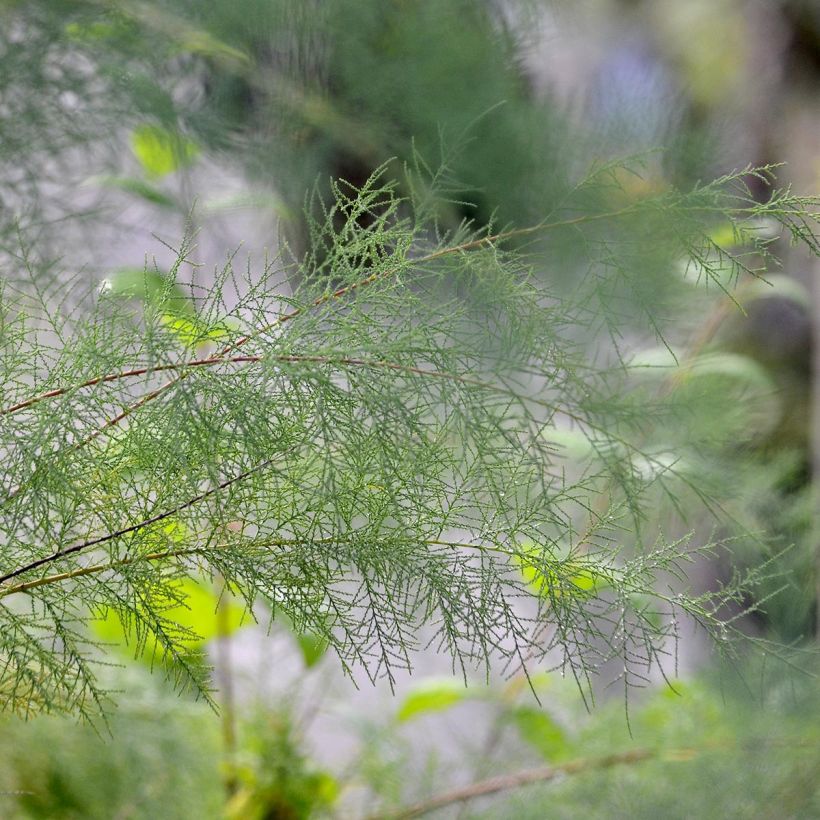

Plant habit
Flowering
Foliage
Botanical data
Tamarix
ramosissima
Pink Cascade
Tamaricaceae
Salt Cedar, Tamarisk, Summar Tamarisk
Cultivar or hybrid
Other Tamarix - Tamarisk
Planting and care
Planting period
Intended location
Care
-
, onOrder confirmed
Reply from on Promesse de fleurs
Hedge shrubs
Haven't found what you were looking for?
Hardiness is the lowest winter temperature a plant can endure without suffering serious damage or even dying. However, hardiness is affected by location (a sheltered area, such as a patio), protection (winter cover) and soil type (hardiness is improved by well-drained soil).

Photo Sharing Terms & Conditions
In order to encourage gardeners to interact and share their experiences, Promesse de fleurs offers various media enabling content to be uploaded onto its Site - in particular via the ‘Photo sharing’ module.
The User agrees to refrain from:
- Posting any content that is illegal, prejudicial, insulting, racist, inciteful to hatred, revisionist, contrary to public decency, that infringes on privacy or on the privacy rights of third parties, in particular the publicity rights of persons and goods, intellectual property rights, or the right to privacy.
- Submitting content on behalf of a third party;
- Impersonate the identity of a third party and/or publish any personal information about a third party;
In general, the User undertakes to refrain from any unethical behaviour.
All Content (in particular text, comments, files, images, photos, videos, creative works, etc.), which may be subject to property or intellectual property rights, image or other private rights, shall remain the property of the User, subject to the limited rights granted by the terms of the licence granted by Promesse de fleurs as stated below. Users are at liberty to publish or not to publish such Content on the Site, notably via the ‘Photo Sharing’ facility, and accept that this Content shall be made public and freely accessible, notably on the Internet.
Users further acknowledge, undertake to have ,and guarantee that they hold all necessary rights and permissions to publish such material on the Site, in particular with regard to the legislation in force pertaining to any privacy, property, intellectual property, image, or contractual rights, or rights of any other nature. By publishing such Content on the Site, Users acknowledge accepting full liability as publishers of the Content within the meaning of the law, and grant Promesse de fleurs, free of charge, an inclusive, worldwide licence for the said Content for the entire duration of its publication, including all reproduction, representation, up/downloading, displaying, performing, transmission, and storage rights.
Users also grant permission for their name to be linked to the Content and accept that this link may not always be made available.
By engaging in posting material, Users consent to their Content becoming automatically accessible on the Internet, in particular on other sites and/or blogs and/or web pages of the Promesse de fleurs site, including in particular social pages and the Promesse de fleurs catalogue.
Users may secure the removal of entrusted content free of charge by issuing a simple request via our contact form.
The flowering period indicated on our website applies to countries and regions located in USDA zone 8 (France, the United Kingdom, Ireland, the Netherlands, etc.)
It will vary according to where you live:
- In zones 9 to 10 (Italy, Spain, Greece, etc.), flowering will occur about 2 to 4 weeks earlier.
- In zones 6 to 7 (Germany, Poland, Slovenia, and lower mountainous regions), flowering will be delayed by 2 to 3 weeks.
- In zone 5 (Central Europe, Scandinavia), blooming will be delayed by 3 to 5 weeks.
In temperate climates, pruning of spring-flowering shrubs (forsythia, spireas, etc.) should be done just after flowering.
Pruning of summer-flowering shrubs (Indian Lilac, Perovskia, etc.) can be done in winter or spring.
In cold regions as well as with frost-sensitive plants, avoid pruning too early when severe frosts may still occur.
The planting period indicated on our website applies to countries and regions located in USDA zone 8 (France, United Kingdom, Ireland, Netherlands).
It will vary according to where you live:
- In Mediterranean zones (Marseille, Madrid, Milan, etc.), autumn and winter are the best planting periods.
- In continental zones (Strasbourg, Munich, Vienna, etc.), delay planting by 2 to 3 weeks in spring and bring it forward by 2 to 4 weeks in autumn.
- In mountainous regions (the Alps, Pyrenees, Carpathians, etc.), it is best to plant in late spring (May-June) or late summer (August-September).
The harvesting period indicated on our website applies to countries and regions in USDA zone 8 (France, England, Ireland, the Netherlands).
In colder areas (Scandinavia, Poland, Austria...) fruit and vegetable harvests are likely to be delayed by 3-4 weeks.
In warmer areas (Italy, Spain, Greece, etc.), harvesting will probably take place earlier, depending on weather conditions.
The sowing periods indicated on our website apply to countries and regions within USDA Zone 8 (France, UK, Ireland, Netherlands).
In colder areas (Scandinavia, Poland, Austria...), delay any outdoor sowing by 3-4 weeks, or sow under glass.
In warmer climes (Italy, Spain, Greece, etc.), bring outdoor sowing forward by a few weeks.


































